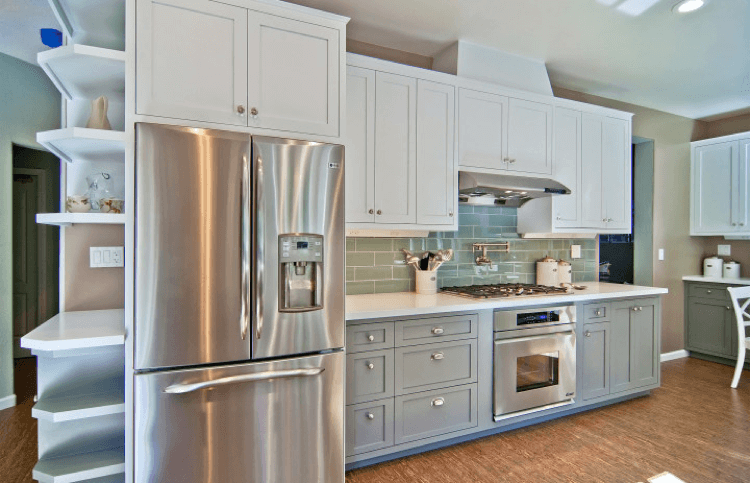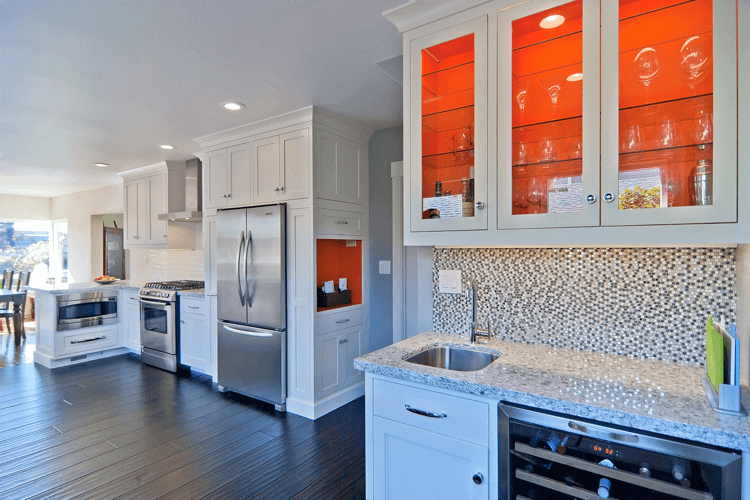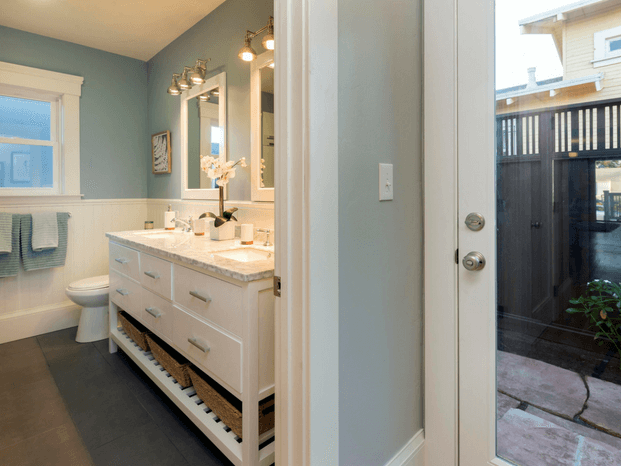Painting your home is more than choosing a color; you’ll need to determine the type of gloss and sheen you would like as well. From bathroom to bedroom to kitchen, there’s an ideal paint finish. The paint finish can help bring out your home’s beauty, yet it can also show imperfections. The numerous different names for these paints across brands can get confusing, so these are a few essential tips to help you create a superior result for your home.
Measuring Paint’s Gloss and Sheen
Before reviewing how to utilize gloss and sheen paints, it’s important to know how it’s measured. The rating is on each paint can, and it’s determined by the amount of light that reflects off the painted surface.
This means that light is reflected off the surface at a given angle then back into a receptor. The receptor determines the number of gloss units, on a scale of 0 to 100. The higher the number, the shinier and/or glossier the paint. Paint can have either a shine or a gloss value, and in some cases, they have both.
Gloss paints are measured at a 60-degree angle, and sheen paints are measured at an 85-degree angle. Gloss finishes have higher reflective characteristics, which means you’ll need to consider the type and level of lighting the room will have.

Color boosts how the eye perceives sheen, and can make a wall shiny. Sheen is most noticeable in low-gloss paints.
How to Determine the Type of Gloss or Sheen Paint to Use
When considering the type of paint to use in your home, there are a few points to consider, including traffic levels, lighting, and how your windows are positioned. Choosing the right type of gloss and/or sheen means you’ll highlight the right parts of your home while minimizing what you would like to hide.
Use a low gloss or sheen in your home for:
• Hiding imperfections on walls, because low gloss or sheen paint will hide flaws. This is particularly true when painting interiors.
• Minimizing the glare in these rooms. If there are multiple windows letting in natural light, a high gloss paint can have a mirror-like effect.
• A space that doesn’t receive much attention, like ceilings or hallways.
Use a high gloss or sheen in your home for:
• Painting high-traffic areas. High gloss and sheen paints are more durable than its lower counterparts, making it ideal for rooms that need more cleaning. Glossy finishes are common in bathrooms and kids’ rooms for this reason.
• Adding depth in a space. Contrasting finishes helps provide depth, which you can achieve by using a high gloss on the trim and a flat finish on the walls. High gloss finishes are also used to highlight a home’s architectural features.

When painting your home, considering how each room is used and its natural light will help you achieve the final result you’re looking for. Brands will rate their paint in different ways, so it’s important to do your research before cracking the paint can open.
Sherwin-Williams offers standard definitions, which gives you an ideal starting point.
• Flat/Matte paint creates very little to no reflectance.
• Satin paint creates a low to medium reflectance. This includes low-gloss, eggshell, low sheen, satin, and velvet.
• Semi-gloss paint offers a medium to low-high reflectance. This includes semi-gloss, pearl, and medium luster.
• Gloss paint creates a high reflectance. This includes both gloss and high-gloss.
Balancing Durability and Appearance
Because high gloss and sheen paints are more durable, they’re a go-to choice when homeowners are looking for a finish that will last many years. But appearance is also important. When painting bathrooms or kids’ rooms, a high gloss finish can affect how color is perceived.
There are different paint ratings within the semi-gloss and gloss categories. Choosing a paint on with a lower rating can still help protect your walls while also minimizing the glare.
Sherwin-Willians recommends eg-shel, satin, velvet, pearl, or semi-gloss for bathroom paint. These categories will help keep the walls safe from the frequent moisture while also providing a great visual result.
Children’s rooms can be painted with these middle selections, which include eg-shel, satin, velvet, and pearl. Sherwin-William even recommends low gloss or low sheen selections, but keep in mind that these will be less durable. This selection would be best for older children who are less likely to damage the walls. Their drawings are beautiful, but not on the walls!
Is There Ever a Time to Use High Gloss Paint?
With these points regarding minimizing reflective paint, it’s important to note that gloss and high gloss paints can definitely be a valuable choice in certain situations. Homeowners typically use these finishes for doors, windows, trim, and cabinets. These typically have a smaller surface area and add just the right amount of shine to a room.
Don’t be afraid to use high gloss paint, as long as you balance it with a low gloss and low sheen selection on the walls and ceilings, as well as with the type of furniture you have.
When Do I Use a Flat or Matte Finish?
Flat or matte finishes are often the go-to solution when painting bedrooms. Its high-pigment wall coverage helps save money, and it’s considered a low-traffic area in your home. This means that because there are fewer people walking through your bedroom, the paint doesn’t need to be as durable as in other rooms.
As mentioned previously, this is also an ideal choice to hide imperfections in the walls. If you have a formal living room or study, flat or matte paint can help create a beautiful final result. It definitely will not clean as well as higher gloss and sheen choices, so make sure it’s in an area that won’t need frequent attention.
There’s No One Size Fits All Choice
While we would like to offer a definitive answer for specific home painting solutions, this is a highly customized process. Factors like natural light, traffic, flaws, and use will all play a role in finding the right paint for your home.
You don’t have to stick with traditional paint choices, but we recommend considering how each color and finish will look when paired with your other paint selections for your home.
Gloss and sheen measurements also help compensate for color perception changes. Because gloss and sheen reflect at different angles, it can create a mismatched look in certain areas of the home.
For an area with a lot of movement, like a hallway, choosing a paint with similar reference numbers for both gloss and sheen will help solve this problem. This is due to both angles reflecting the same amount of light, thus giving an even final result.
Choosing the right gloss or sheen paint may not seem like a significant step in the home painting process, but it’s essential! By considering the type of area you’ll be painting, you can ensure you choose the best paint possible for a final product you’ll want to show off.
For an experienced Marin county home painter that will help you choose the best finish for your home, give us a call at (888) 977-2468.




